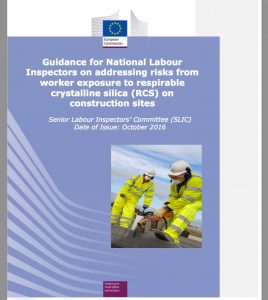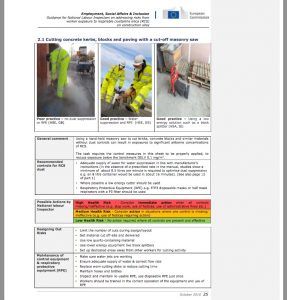The European Commission’s Senior Labour Inspectors’ Committee (SLIC) launched its Guidance for National Labour Inspectors on Thursday 27 October 2016 in The Hague, the Netherlands. Its purpose is to help Labour Inspectors address the risks workers face when they are exposed to respirable crystalline silica (RCS) on construction sites.The document, developed by SLIC’s working group on chemicals, CHEMEX, includes sections on why RCS is a health risk, the EU regulatory framework and practical information. This includes the hierarchy of control plus important examples of relevant control measures. Together with 14 task sheets it focusses on the highest priority RCS risks on construction sites. In putting together this guidance the working group considered the practices of hundreds of inspectors from the 28 member states of the European Union.

